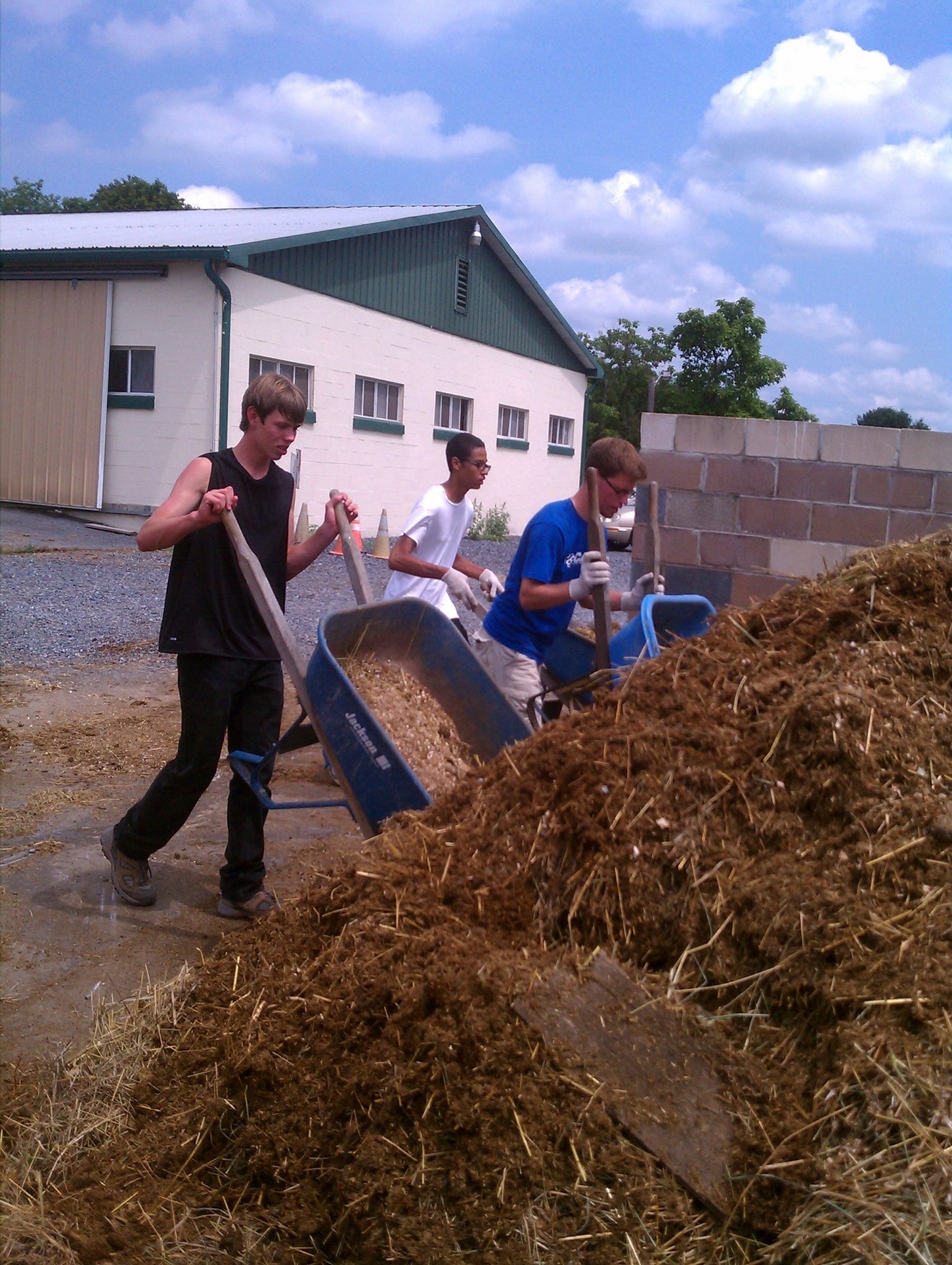 1. Dress for success and have the right tools!
1. Dress for success and have the right tools!
Wear dingy
clothes, be sure you have work boots, and consider grabbing gloves. A good pair of gloves will keep you
from getting painful blisters on your hands. Don't wear your riding boots! You've spent a lot of money on
them and they will be ruined by urine. Get rubber or other types of work boots. Gather together all of
your tools and park your wheelbarrow facing the direction you'll want to go when you are finished and it
is full.
What you need:
Wheelbarrow
Pitch Fork
Shaving Fork
Broad Shovel
Broom
Gloves
Boots (not your riding boots)
2. Move your horse out
You can't clean your horses' stall
if he's still in it, so take advantage of his or her pasture time or move them into an empty stall, then remove
any feed tubs, watering buckets and toys before beginning.
3. Do it right and do it well
Remove manure and wet or soiled bedding using a pitchfork for straw, a shaving
fork for hay, and a shovel when necessary. Put it into the wheelbarrow and be sure to empty it when it gets
full so you always have plenty of room. Be sure you are thorough. Move clean bedding to one side once you have
a clean area and check beneath it for any soiled bedding that is hidden underneath.
4. Don't over fill
Though it's certainly tempting to cut
the amount of work you think you have by over filling your wheelbarrow, don't. It isn't worth it and you may
trip or be unable to lift it. It is better to spend the extra time and energy to make more trips than hurt
yourself or someone else by making the wheelbarrow too heavy and unwieldy.
5. Make the bed
Go through and evenly distribute whatever
bedding you didn't clean out. Be sure you check up around the sides of the stall where the horse may have
tossed it. Add new bedding to replace everything that was removed for being dirty and fluff it for your horse.
Know your flooring and your seasons; a floor covered with a thick rubber mat can have a thinner layer of
bedding. Horses in winter will want more bedding than those in summer. Concrete floors will require more
bedding than rubber mats. Know what is happening and what your horse likes when you make their bed.
6. Clean up and move back in
Once you've finished, sweep
up any spilled manure, straw or shavings that are in the alleyway and doorways. Put all your tools away
properly, making sure that they wont' be in others' way or a danger, and prepare for your horse to move back
in. Replace food tubs, watering buckets, toys and then bring your horse back into his newly cleaned
stall.
7. Extra Duty
Once a week or so you will want to
completely strip your stall of all bedding, clearing everything out till the floor is bare. Shovel out any
remains and sweep till clean. Disinfect and odor control the floor, let it dry completely and then proceed to
lay new bedding.
Related Articles
Stable Building Tips
Bedding Pros and Cons
Mucking Out Your Horse's Stall
Feeding Your Horse
What To Feed Your Horse
Giving Up Your Horse
Horse Grooming
Do Horses Need Shoes?
Teeth and Horses
Winterizing Your Barn
Preparing to Travel With Your Horse
Winter Care for Horses
Preventing Barn and Stall Boredom
Tips for Traveling with Your Horse
Stable Requirements: Building
the Space to Meet Your Horses' Needs
Preparing Your Horse for Hot Weather
Tips for Maintaining Your Horse Trailer
Proper Hoof Care
Why Braiding Horse Hair is Beneficial to
Their Health
Tips for Taking Care of an Older Horse
How to Keep Your Horse Fed on a Budget
Transitioning Horses from Winter Feed to
Spring Feed
Why You Should Feed Your Horse Flaxseed
Dealing With an Unhappy Horse in Their
Stall